As the vibrant colors of summer gardens fade, and the crisp air of autumn settles in, many gardeners feel a pang of longing for the next growing season. For those with limited space, a balcony, patio, or small yard often presents unique challenges and opportunities. Instead of packing away your gardening aspirations with your summer tools, this is the perfect time for thoughtful garden planning. You possess a unique advantage: the influx of beautiful, full-color seed catalogs arriving in your mailbox. These aren’t just glossy advertisements; they are powerful tools for transforming your small space into a productive and beautiful garden next year.
This article introduces you to the “Catalog Composting” method, a practical, enjoyable, and budget-friendly approach to designing your next balcony garden. It’s a way to break down your big gardening dreams into manageable, actionable steps, ensuring you get the most out of your small space without breaking the bank. You will learn how to leverage these seasonal publications to map out your plant choices, manage your budget, and set yourself up for a thriving growing season, long before the ground thaws. This method helps you make informed decisions, transforming what can be an overwhelming process into an exciting `winter garden planning for beginners` adventure.
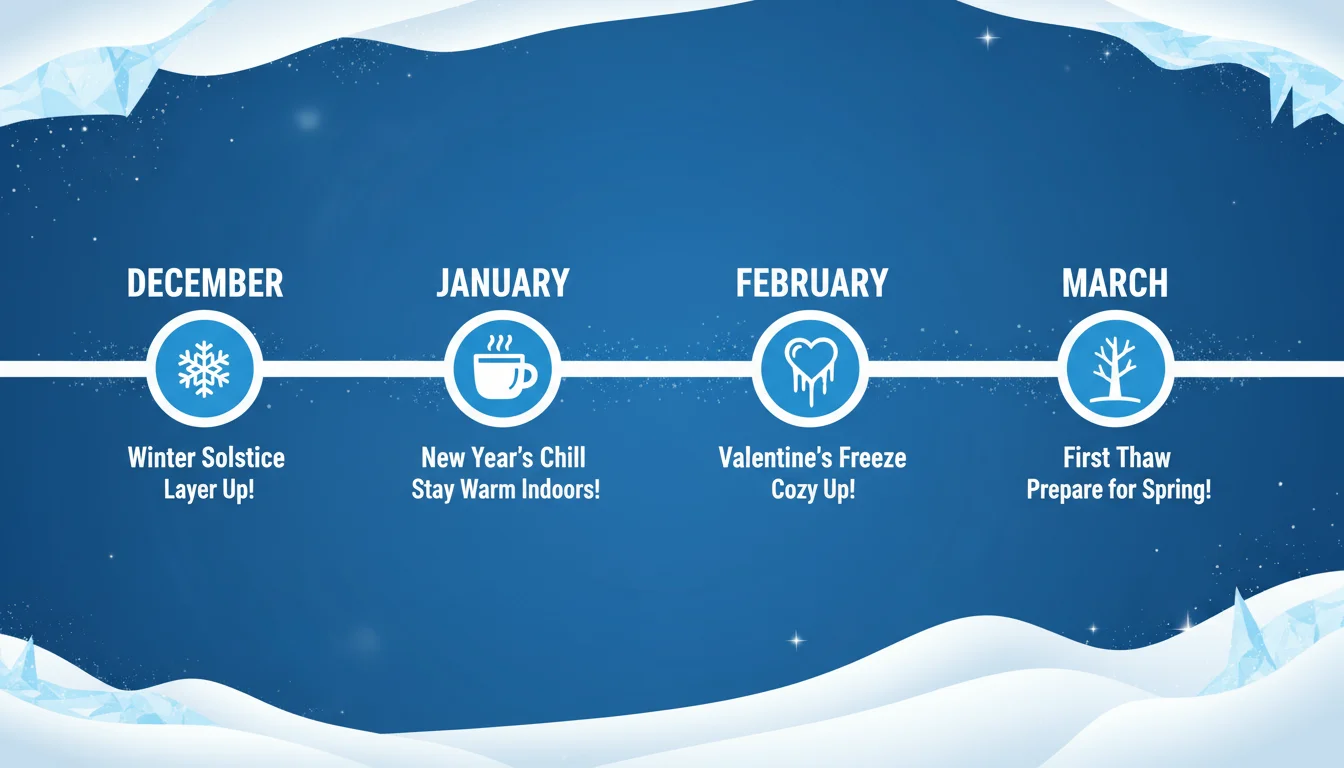
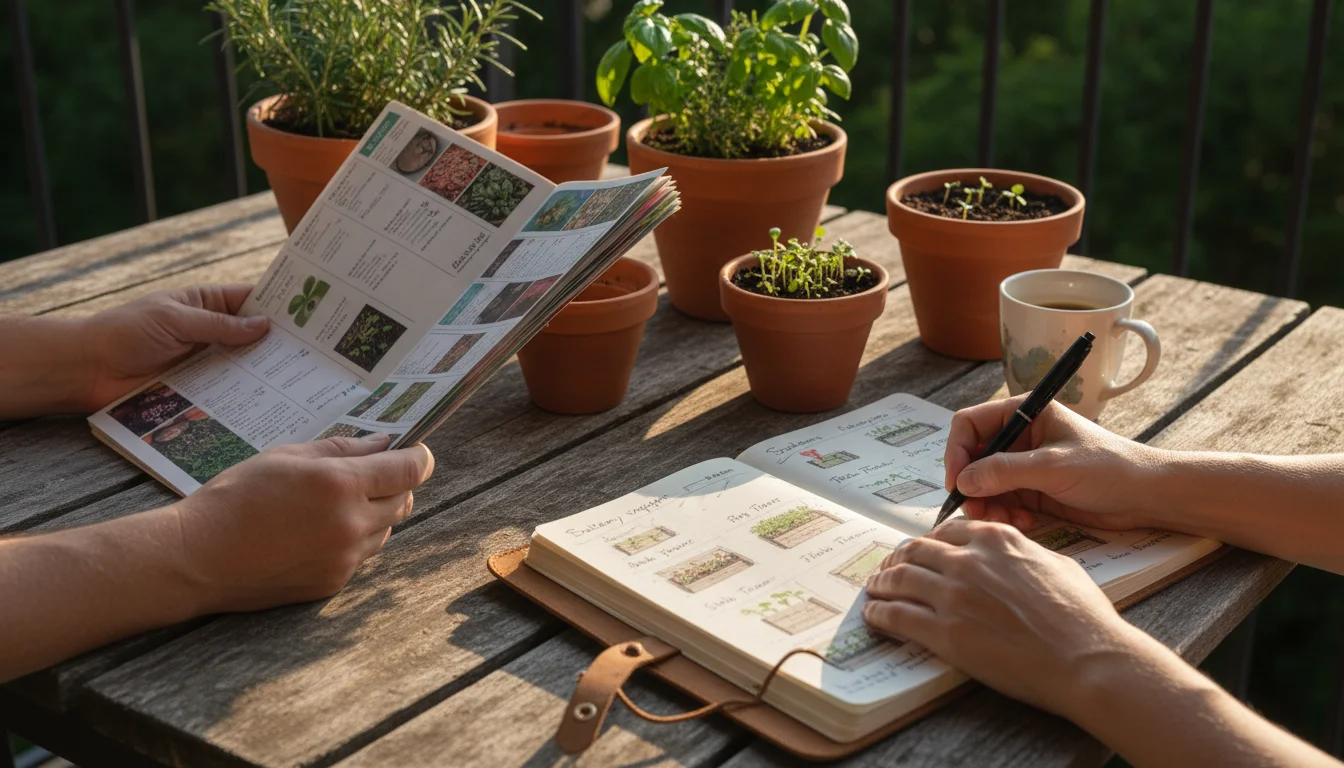
What is Catalog Composting and Why Does it Work for Small Spaces?
The term “Catalog Composting” might sound a bit unconventional, but its essence lies in transforming raw ideas into fertile plans, much like how organic matter decomposes into rich soil. You will not literally compost your seed catalogs. Instead, you metaphorically break down the vast amount of information, beautiful images, and enticing descriptions found in these catalogs into digestible components for your `garden planning`. This method provides a structured approach to sifting through hundreds of plant varieties and gardening supplies, making it an incredibly effective tool for small-space gardeners who need to make every choice count.
Why does this method excel for those with limited space? Small gardens, whether a balcony, a patio, or a compact urban yard, demand efficiency. You cannot afford to plant something that will quickly outgrow its container or demand too much sun in a shady spot. Catalog Composting forces you to consider these constraints early. It moves you from impulse buying to strategic selection, ensuring your chosen plants are genuinely suited for your unique growing conditions. You transform overwhelming choices into thoughtful decisions, leading to a garden that thrives within its boundaries. By focusing on practical application, you reduce waste of seeds, soil, and precious space, making your gardening efforts more sustainable and rewarding.
This method works because it encourages a holistic view. Instead of just picking a pretty flower, you consider its mature size, its light requirements, its water needs, and how it will fit into your overall `balcony garden design`. You weigh the cost of seeds against your budget, compare varieties across different suppliers, and integrate these decisions into a coherent plan. This proactive approach saves you time, money, and frustration once the planting season arrives, providing a clear roadmap for success.
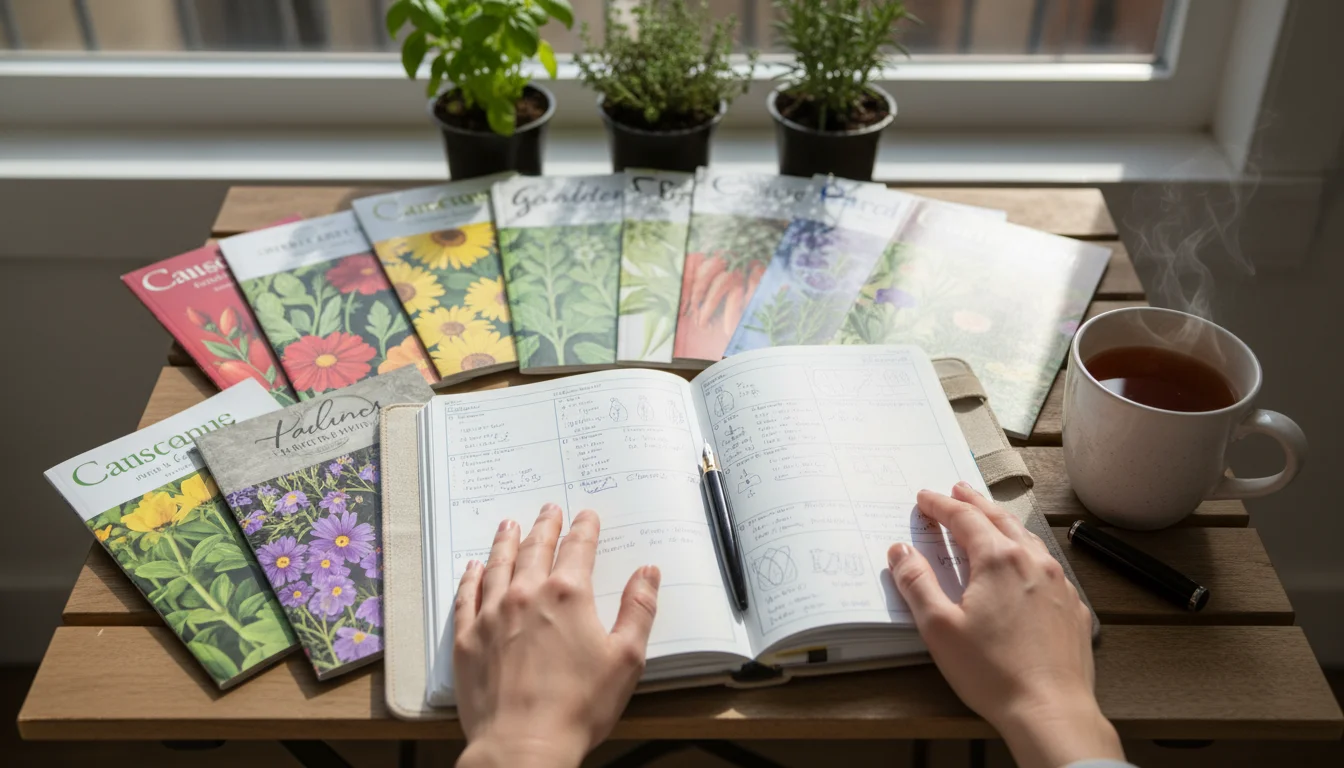
Gathering Your Tools: Seed Catalogs and Your Planner
Before you dive into the exciting world of plant possibilities, gather a few essential items. Think of this as setting up your garden planning workstation. You will need more than just the catalogs themselves; you require tools to organize your thoughts and selections.
- Seed Catalogs: Collect as many as you can. Fall and winter are prime times for these to arrive. Diverse catalogs mean diverse options and price comparisons. Look for catalogs from companies known for varieties suitable for small spaces, like dwarf vegetables, compact herbs, or trailing flowers designed for containers.
- A Dedicated Notebook or Binder: This will be your garden planning journal. Choose something sturdy that you can revisit year after year. Alternatively, a digital spreadsheet works well for budget tracking and inventory.
- Pens, Pencils, and Highlighters: Different colors help you categorize. For example, green for “must-haves,” yellow for “maybe,” and red for “too expensive” or “too big.”
- Scissors: For cutting out pictures and descriptions you love.
- Glue Stick or Tape: To affix your cuttings into your notebook.
- Measuring Tape: To mentally or physically measure your balcony space and potential container sizes.
Having these tools ready simplifies the process. Your notebook becomes a living document of your `garden planning`, evolving from raw ideas into a detailed strategy. Many successful small-space gardeners report that this organized approach dramatically reduces stress and increases their enjoyment when it comes to planting time. This preparatory step ensures you have everything at your fingertips as you move through the “Catalog Composting” phases.
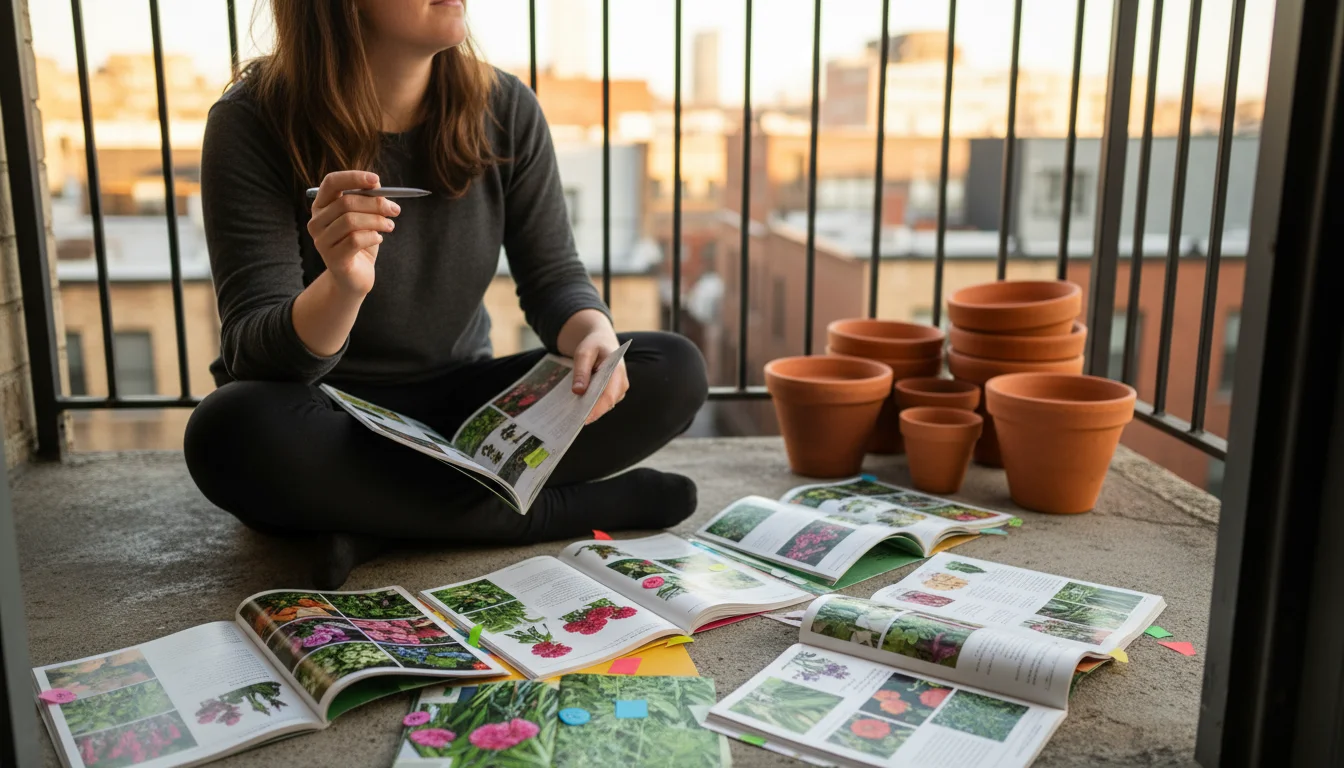
Phase One: Dream Big, Mark Pages, and Explore Possibilities
This initial phase is all about inspiration and discovery. Put away your practical hat for a moment and allow yourself to dream. Go through each seed catalog page by page, without immediate judgment. The goal here is to identify everything that catches your eye, whether it is a vibrant flower, an unusual vegetable, or a particularly attractive fruit. You are not making final decisions yet; you are simply gathering ideas. Think broadly about your ideal `balcony garden design`.
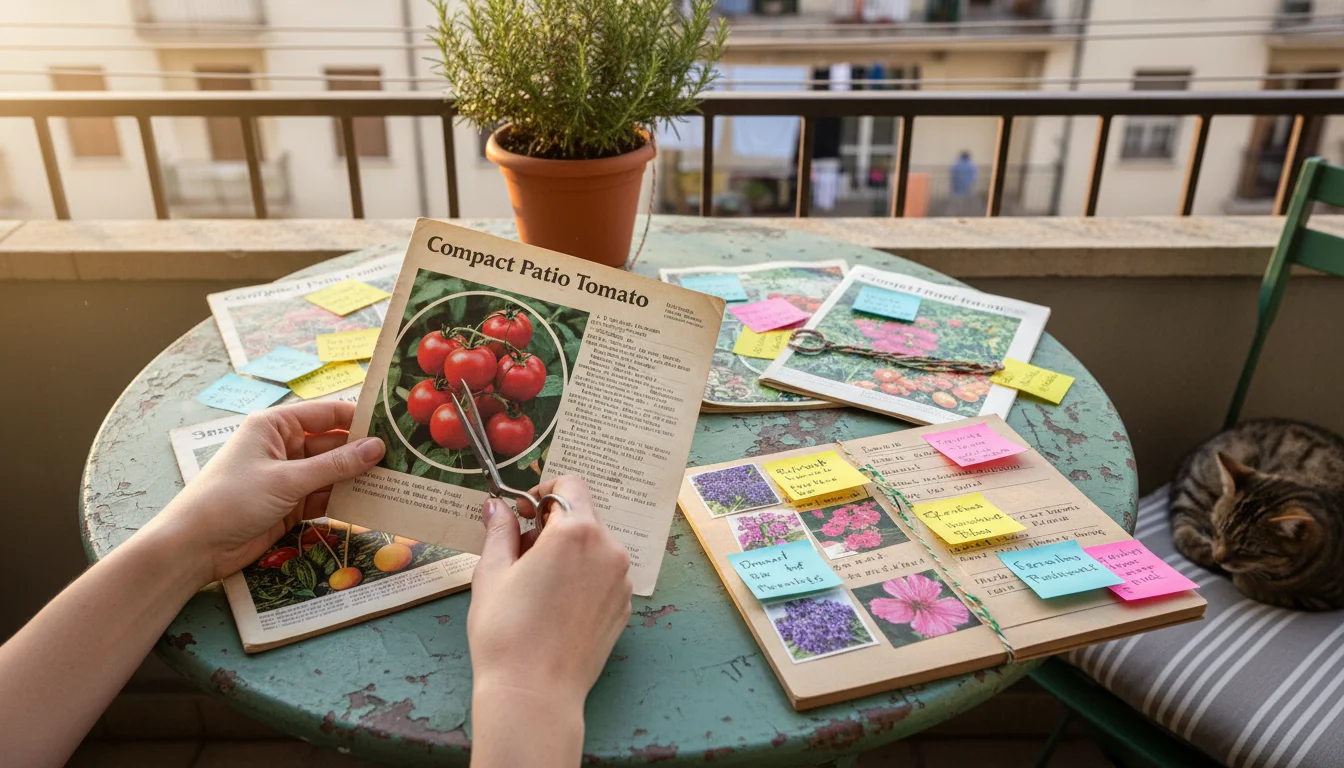
How to Approach Phase One:
- Flip Through Freely: Simply enjoy the beautiful photography and enticing descriptions. Let your imagination run wild. What colors do you want? What textures? Do you envision a bountiful vegetable patch, a fragrant herb garden, or a riot of colorful blooms?
- Mark Everything That Appeals: Use sticky notes, dog-ear pages, or highlight text. Do not overthink it. If a plant sparks joy, mark it. You can be generous here, marking dozens of possibilities. Look for traits like “compact,” “dwarf,” “container-friendly,” or “patio variety.”
- Cut and Collect: For items you particularly love, snip out the picture and description. Paste these into your dedicated notebook. Create sections for different plant types, such as “Vegetables,” “Herbs,” and “Flowers.” This physical collection starts to form a visual representation of your aspirations.
- Note Key Details: As you cut and paste, quickly jot down any crucial information mentioned in the catalog: variety name, days to maturity, light requirements, and a rough price. This early note-taking will save you time in later phases.
- Consider Your Taste Buds: If you are planning a small vegetable garden, think about what you and your family genuinely enjoy eating. Do you love fresh salads? Then prioritize different types of lettuce, spinach, and maybe some compact tomato varieties. Do you cook with specific herbs often? Mark those.
This phase is an enjoyable exercise in visualization. It allows you to explore the full spectrum of gardening possibilities before you encounter the realities of space and budget. Many beginner gardeners skip this step, rushing directly to purchasing, which often leads to disappointment. By taking the time to dream, you build a stronger foundation for a garden that genuinely reflects your desires.
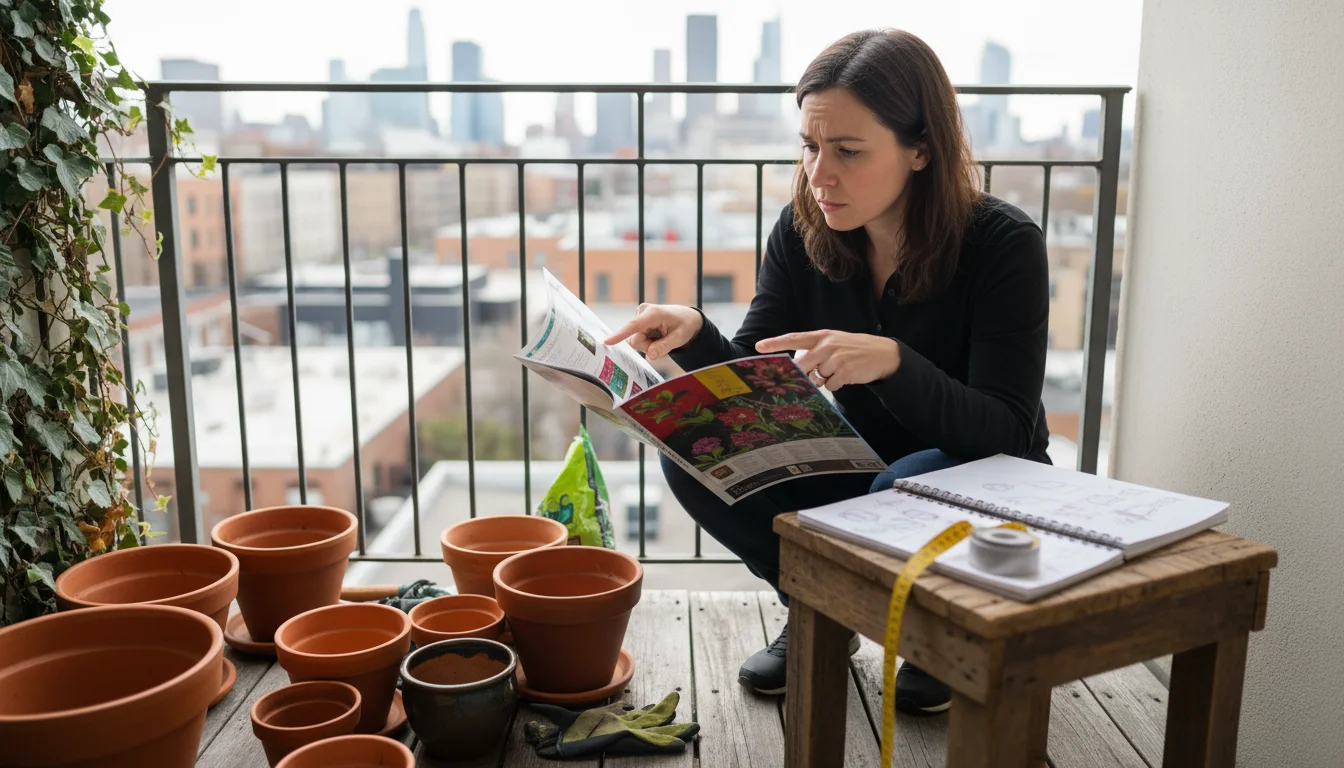
Phase Two: Reality Check and the Container Garden Conundrum
Now, it is time to bring your dreams back to earth, specifically to the dimensions of your balcony or patio. This phase involves a critical assessment of your marked plants against the practical limitations of your small space. For a `balcony garden design`, every inch matters, and every plant needs to pull its weight. This is where you really start to hone your skills in how to `choose seeds for container garden` success.
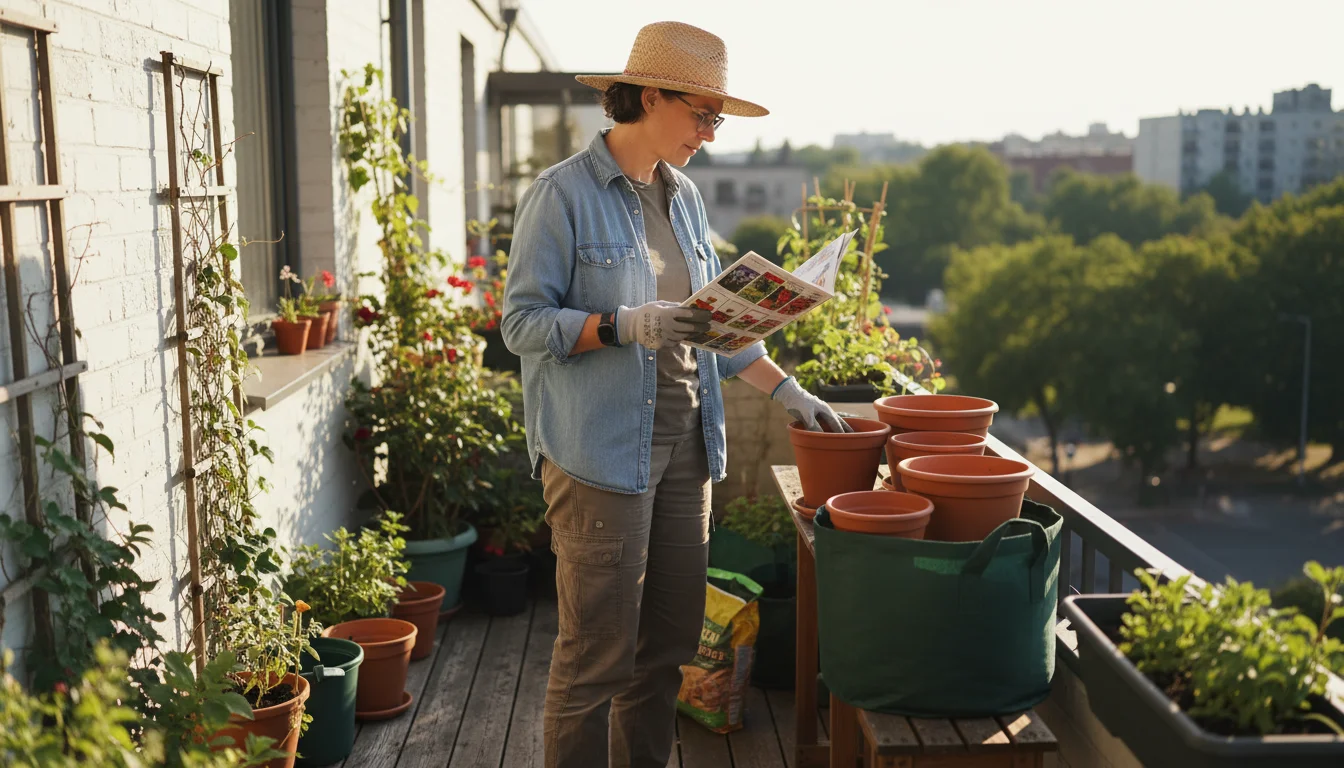
Key Considerations for Your Small Space:
- Sunlight Assessment: Track your balcony’s sun exposure throughout the day during peak growing season. Is it full sun (6+ hours), partial sun (4-6 hours), or shade (less than 4 hours)? Cross-reference this with the light requirements listed for each plant you marked. Many wonderful plants simply will not thrive without adequate light.
- Available Space: Look at the mature size of your desired plants. Can your balcony physically accommodate them? Consider not just the footprint, but also vertical growth. Trailing plants might be fine, but a sprawling squash vine might overwhelm a small railing.
- Container Compatibility: Think about the container types and sizes you have or plan to acquire. A plant that needs deep roots, like a full-sized tomato, requires a much larger pot (at least 5-gallon capacity) than a shallow-rooted lettuce. Drainage, which refers to how water moves through soil and out of the pot, is crucial for container plants; ensure your pots have holes.
- Maintenance Commitment: Be honest about how much time you can dedicate. Some plants are higher maintenance, requiring frequent watering, pruning, or pest management. If you are aiming for a low-maintenance garden, prioritize resilient, less demanding varieties.
As you apply these filters, you will inevitably eliminate some of your initially marked plants. This is not a failure; it is refinement. You are shaping your ideal garden into a realistic, thriving one. For instance, a giant pumpkin might be out, but a compact ‘Bush Delicata’ squash could be a perfect fit. This focused approach ensures that every plant you eventually select has a strong chance of flourishing in your specific environment.

Phase Three: Budgeting Your Balcony Bounty
Gardening can become an expensive hobby if you are not mindful of costs. This “Catalog Composting” phase puts your `budget gardening` skills to the test. Now that you have narrowed down your plant list based on suitability for your small space, it is time to compare prices across catalogs and develop a realistic budget for your seeds and related supplies.
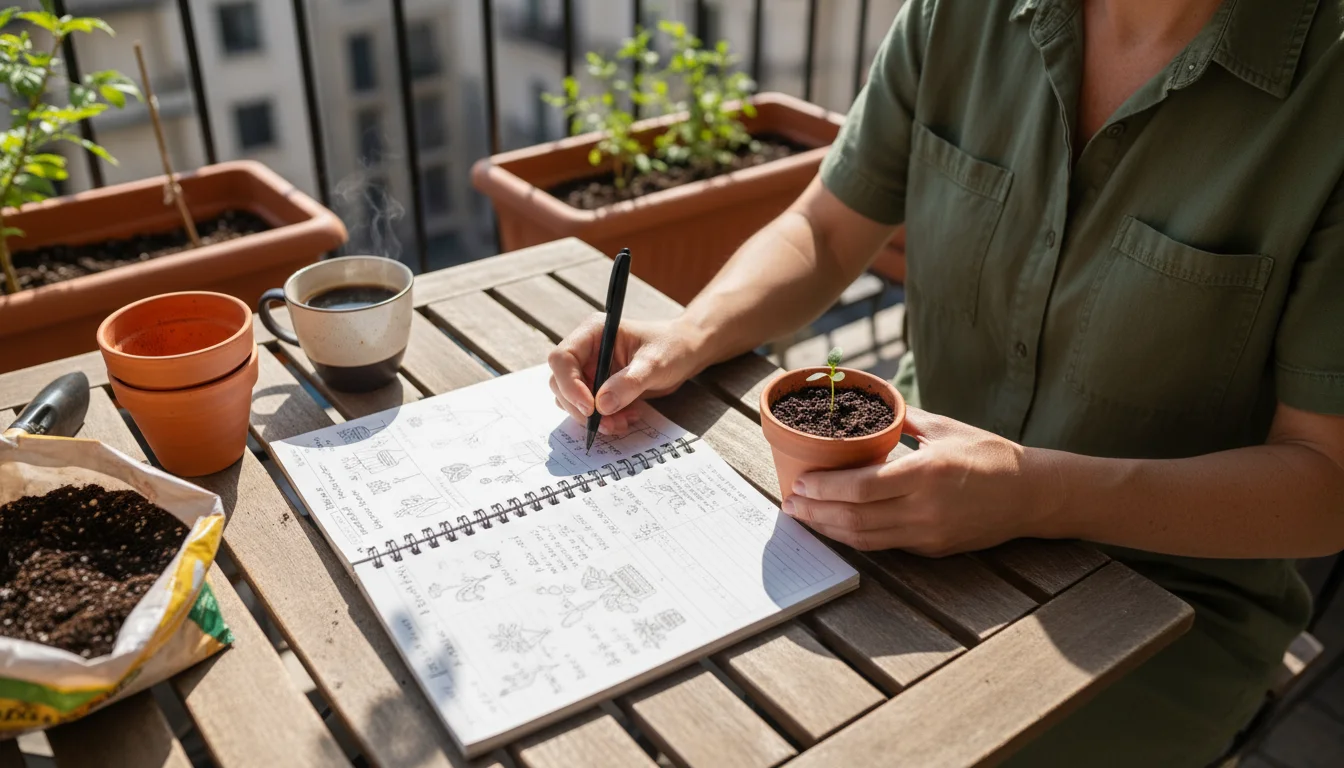
Steps for Budgeting:
- Create a Master Plant List: In your notebook or spreadsheet, create a definitive list of the plants you have chosen from Phase Two. Include the specific variety name.
- Compare Seed Prices: Go back through your catalogs. For each plant on your master list, find its price from at least two different seed companies. Note the seed count per packet, as some cheaper packets might contain fewer seeds. Record these prices in your notebook.
- Factor in Other Supplies: Seeds are just one component. You will also need:
- Potting Mix: High-quality potting mix is essential for container gardening. Estimate how much you will need based on your container sizes.
- Containers: Do you need new pots, grow bags, or vertical planters? Research their costs.
- Fertilizer: Container plants quickly deplete soil nutrients. Plan for a suitable fertilizer.
- Tools: Small trowel, hand pruners, watering can.
- Pest Control: Organic options like neem oil or insecticidal soap.
- Trellises or Stakes: For vining plants.
- Prioritize and Prune Your List (Again): If your initial budget exceeds what you want to spend, it is time to make some tough choices. Can you find a cheaper variety of a similar plant? Can you reduce the number of certain plants? Could you start some plants from kitchen scraps or cuttings instead of seeds?
- Track Your Spending: Keep a running tally as you make decisions. A spreadsheet is invaluable here, allowing you to easily adjust quantities and see the impact on your total.
Consider this example comparison for different seed packets:
| Plant Variety | Catalog A Price (Packet) | Seeds per Packet (A) | Catalog B Price (Packet) | Seeds per Packet (B) | Catalog C Price (Packet) | Seeds per Packet (C) | Selected Price |
|---|---|---|---|---|---|---|---|
| Compact Cherry Tomato ‘Micro Tom’ | $3.50 | 15 | $4.00 | 10 | $3.75 | 12 | $3.50 (Catalog A) |
| Bush Cucumber ‘Spacemaster’ | $2.75 | 20 | $3.25 | 15 | N/A | N/A | $2.75 (Catalog A) |
| Dwarf Green Bean ‘Contender’ | $2.95 | 30 | $3.10 | 25 | $3.00 | 28 | $2.95 (Catalog A) |
| Container Lettuce ‘Tom Thumb’ | $2.25 | 50 | $2.50 | 40 | $2.30 | 45 | $2.25 (Catalog A) |
| Basil ‘Genovese Compact’ | $3.00 | 100 | $3.40 | 80 | $3.15 | 90 | $3.00 (Catalog A) |
This table demonstrates how comparing across catalogs can yield savings. For a small garden, these savings add up quickly. By consciously managing your `budget gardening` from the outset, you eliminate surprises and ensure your gardening endeavors remain enjoyable and affordable.
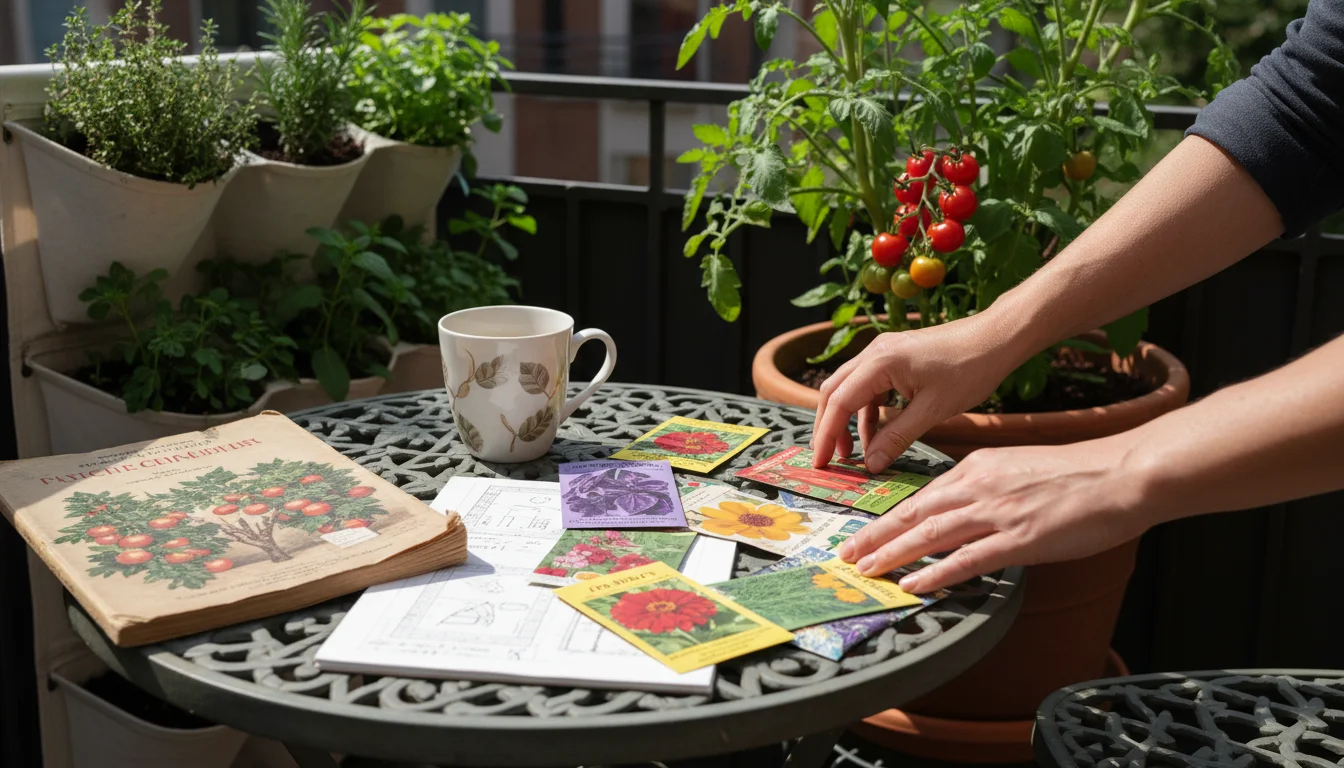
Selecting Your Stars: Choosing Seeds for a Productive Small Vegetable Garden
With your refined plant list and budget in hand, you are ready to make final selections. This phase focuses on optimizing your choices for productivity and enjoyment, especially when you are `planning a small vegetable garden`. Your goal is to get the maximum yield and satisfaction from your limited footprint.

Strategies for High-Yield, Small-Space Gardening:
- Prioritize “Cut and Come Again” Varieties: For leafy greens like lettuce, spinach, kale, and many herbs, choose varieties you can harvest repeatedly throughout the season. This maximizes the output from a single plant.
- Opt for Bush or Dwarf Varieties: Always look for varieties specifically bred for small spaces. For tomatoes, choose ‘Patio’ or ‘Determinate’ types. For cucumbers, ‘Bush Crop’ or ‘Spacemaster’ work well. These plants remain compact, fitting better into containers.
- Consider Vertical Growth: Leverage vertical space with vining plants like pole beans, small cucumbers, or even mini pumpkins that can be trained up a trellis. Ensure your chosen trellises are sturdy enough.
- Focus on High-Value Crops: Grow what you love to eat fresh and what is expensive to buy at the grocery store. This often includes herbs, cherry tomatoes, specialty lettuces, and bell peppers.
- Succession Planting: Plan to plant new batches of quick-growing crops every few weeks. This extends your harvest season. For example, plant a new pot of lettuce seeds every two to three weeks to ensure a continuous supply.
- Companion Planting: Research beneficial plant pairings. Certain plants deter pests or attract beneficial insects when planted together, enhancing overall garden health without chemicals. For instance, basil planted near tomatoes can improve tomato flavor and deter flies.
When you are `planning a small vegetable garden`, remember that diversity often leads to resilience. A mix of different plants can create a mini-ecosystem that is less susceptible to a single pest or disease outbreak. Data consistently shows that diverse home gardens, even small ones, often produce healthier crops due to improved soil biology and natural pest control. Your seed catalogs will often highlight these characteristics, helping you `how to choose seeds for container garden` success.
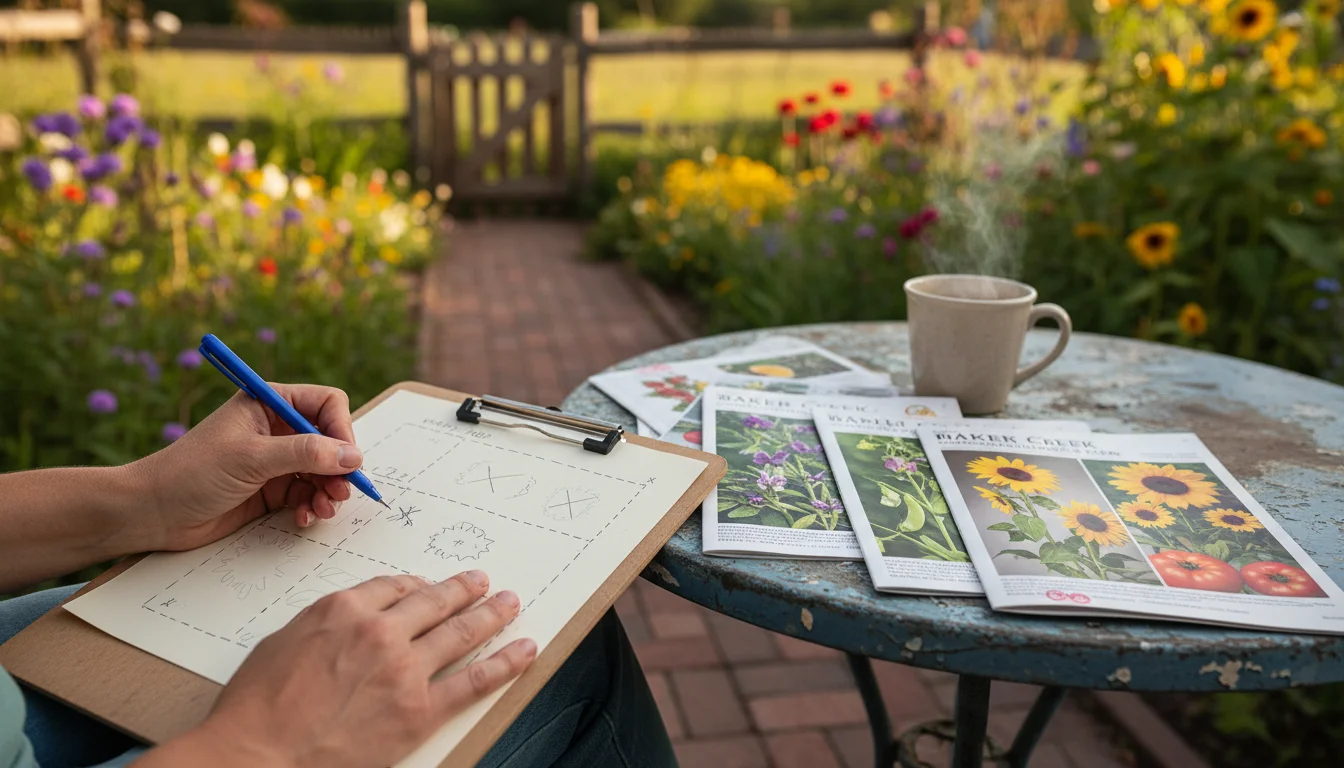
Organizing Your Garden Plan: From Catalog Pages to Planting Day
You have meticulously chosen your plants and budgeted your expenses. Now, consolidate all this information into an actionable `garden planning` guide that will serve you well when spring arrives. This step prevents confusion and ensures a smooth transition from planning to planting.
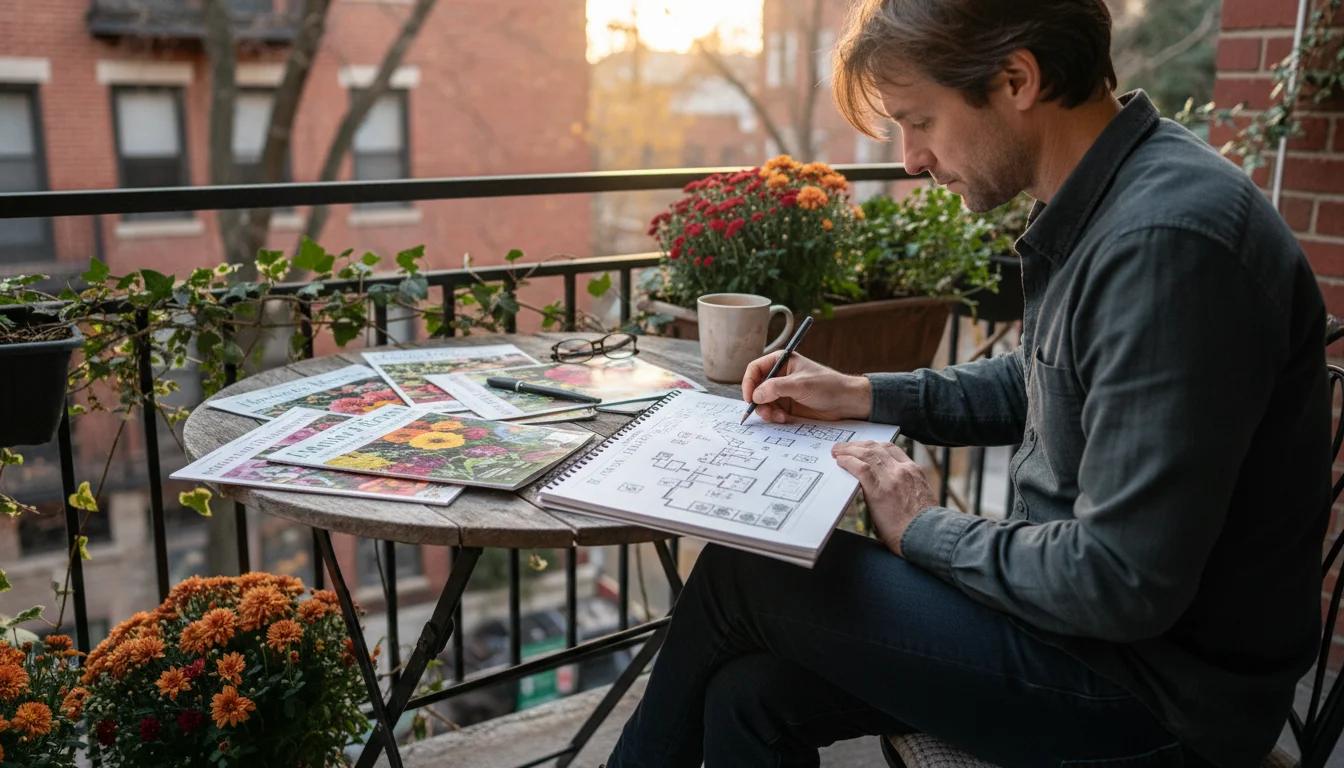
Creating Your Comprehensive Garden Plan:
- Layout Sketch: Draw a simple diagram of your balcony or patio space. Indicate where each container will go, taking into account sun exposure, prevailing winds, and accessibility for watering and harvesting. Label the pots with the plants you intend to grow in them.
- Planting Schedule: For each chosen plant, note its optimal planting time (refer to seed packet information or your local extension service for specific dates for your zone). Create a simple calendar indicating when to sow seeds indoors, when to transplant outdoors, and when to expect harvests. This is critical for succession planting.
- Materials Checklist: Based on your budget, create a final checklist of all materials you need to purchase: specific seed packets, potting mix, containers, fertilizer, tools, and trellises. This list streamlines your shopping trips.
- Seed Inventory: Keep track of the seeds you order or buy. Note the supplier, date of purchase, and any specific planting instructions. Organize your physical seed packets. Many gardeners use clear plastic bins or photo storage boxes for this purpose.
- Maintenance Notes: For each plant, jot down key care requirements: watering frequency, fertilization schedule, and any specific pruning needs. This serves as a quick reference guide during the growing season.
A well-organized plan removes much of the guesswork from gardening. It empowers you to confidently approach planting day, knowing you have considered all the variables. This systematic approach is especially beneficial for `winter garden planning for beginners`, providing a clear path forward without overwhelming details.

Troubleshooting Your Catalog Composting Plan
Even the most detailed plans can encounter unforeseen challenges. The “Catalog Composting” method helps minimize these, but knowing how to troubleshoot potential issues is essential for any gardener. Your small-space garden relies on adaptability.

Common Planning Pitfalls and Solutions:
- Overwhelm from Too Many Choices: If you find yourself with an impossibly long list after Phase One, go back to basics. Focus on 3-5 “must-have” plants that you absolutely want to grow. Then, add a few “would-be-nice” plants if space and budget allow. Often, limiting your initial choices helps you make clearer decisions.
- Budget Creep: It is easy for costs to escalate. If your budget is stretched, revisit Phase Three. Can you reuse old containers? Can you make your own potting mix using local compost if available? Consider fewer plants but higher-quality ones. Starting some seeds from kitchen scraps, like romaine lettuce butts or green onion roots, also reduces costs.
- Underestimating Plant Size: This is a common mistake for new gardeners. A “compact” tomato might still need a large pot. Always err on the side of giving plants slightly more room than you think they need, especially in containers. Data from university extensions consistently shows that insufficient root space is a leading cause of stunted container plant growth. If a plant starts to look too big, consider pruning it carefully to manage its size, or if it is very young, transplanting it to a larger container.
- Inaccurate Sun Assessment: Your balcony’s sun exposure changes throughout the year. What seems sunny in winter might be partially shaded by a growing tree in summer. Try to observe your space during the actual growing season, if possible, or use a sun calculator app. If you discover a discrepancy, be ready to shift plants or adjust your selections for more shade-tolerant varieties.
- Forgetting About Pollination: Some vegetable plants, like squash and cucumbers, require insect pollination to produce fruit. If you have limited insect activity on your balcony, you may need to hand-pollinate. Plan for this by researching the specific needs of your chosen plants.
Your ability to adapt and refine your plan is a significant part of successful `garden planning`. The Catalog Composting method provides a robust framework, but real-world gardening always requires a degree of flexibility. Think of your plan as a living document, ready to be tweaked as you gain more experience and insight into your unique small space.
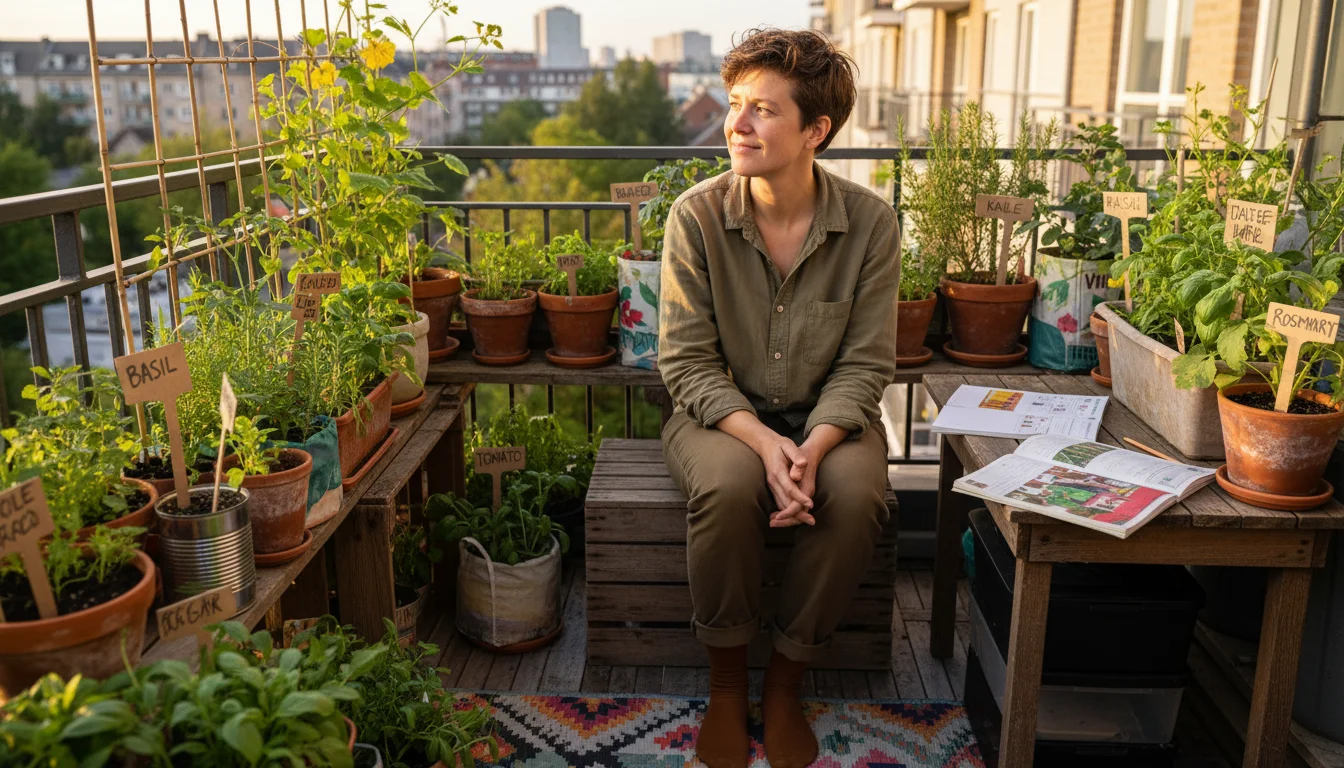
Embracing Sustainability in Your Small Space
Gardening, even in a small space, offers tremendous opportunities to practice sustainability. Incorporating eco-friendly habits into your `garden planning` benefits the environment and often saves you money in the long run. The Catalog Composting method encourages these practices by promoting thoughtful choices.

Sustainable Practices for Your Balcony Garden:
- Choose Organic and Heirloom Seeds: Organic seeds come from plants grown without synthetic pesticides or fertilizers. Heirloom varieties are open-pollinated, meaning you can save their seeds year after year, fostering biodiversity and reducing your reliance on commercial suppliers. Many seed catalogs clearly label these options.
- Practice Seed Saving: For open-pollinated varieties, learn to save seeds from your healthiest plants. This not only saves money but also allows you to adapt plants to your specific microclimate over time. It is a rewarding aspect of `budget gardening`.
- Make Your Own Compost (if feasible): Even a small worm bin on a balcony can turn kitchen scraps into nutrient-rich compost for your containers. This reduces waste and provides a fantastic soil amendment. If a worm bin is not possible, seek out local community composting programs.
- Conserve Water: Use self-watering containers or employ methods like drip irrigation tailored for small spaces. Group plants with similar water needs together. Apply mulch (shredded leaves, straw) to the top of your container soil to reduce evaporation.
- Reuse and Repurpose: Before buying new pots, look around your home. Many items, from plastic food containers (with drainage holes added) to old buckets, can be repurposed into planters. This is a core tenet of `budget gardening`.
- Attract Beneficial Insects: Plant flowering herbs and small annuals that attract pollinators like bees and butterflies. These insects help your fruiting plants and can naturally control pests, reducing the need for chemical interventions.
Every small action you take toward sustainability in your `balcony garden design` contributes to a healthier planet. By consciously selecting seeds, managing waste, and conserving resources, you not only grow food and beauty but also become an active participant in environmental stewardship. Your small garden can make a big difference.
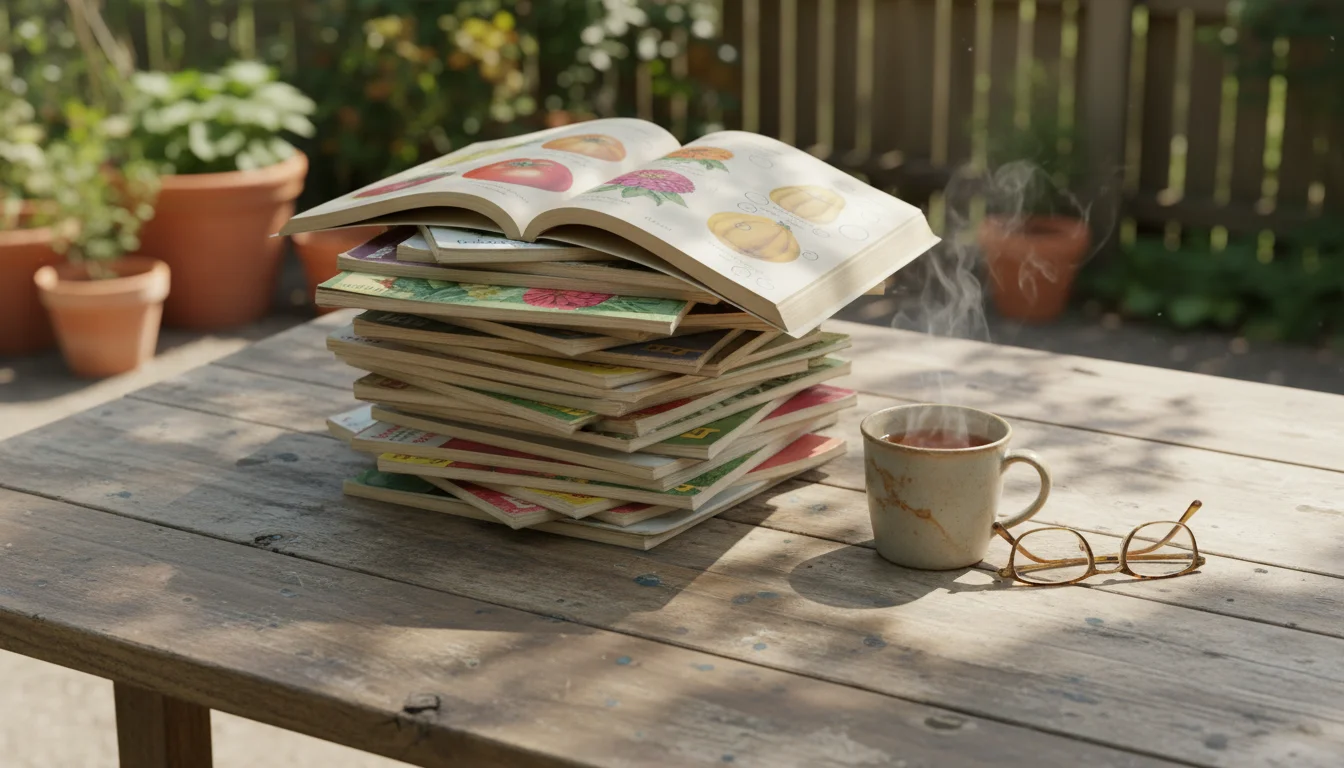
Frequently Asked Questions
What if I only have one or two seed catalogs? Can I still use this method?
Absolutely! The Catalog Composting method is adaptable. Even with just a couple of catalogs, you can still follow the phases of dreaming, reality-checking, and budgeting. The core benefit is organizing your thoughts and choices. You might rely more on online research for price comparisons or alternative varieties, but the structured approach remains the same.
Is it really cheaper to start from seeds than to buy plants?
Generally, yes, especially for a `planning a small vegetable garden`. A packet of seeds often contains dozens, if not hundreds, of seeds for a fraction of the cost of one or two starter plants. This is a significant advantage for `budget gardening`. While starting seeds requires a bit more effort and some initial supplies (seed starting mix, trays, lights if growing indoors), the long-term savings are considerable.
How do I know which plants are truly “container-friendly”?
Many seed catalogs explicitly label varieties as “compact,” “dwarf,” “patio,” or “container-friendly.” Look for these keywords. You should also check the mature size of the plant, both height and spread, and compare it to the size of your available containers. Plants that are determinate (meaning they grow to a certain size and produce all their fruit at once) are often better for containers than indeterminate types (which continue to grow and produce throughout the season).
What if I change my mind about a plant after creating my plan?
That is perfectly fine and often happens! Your garden plan is a guide, not a rigid contract. As you gain experience or discover new plant varieties, you might want to make adjustments. The beauty of this organized method is that it is easy to swap out one plant for another within your existing framework, especially if you have kept good notes on their requirements and costs. This flexibility ensures your `balcony garden design` remains exciting and relevant to your evolving tastes.
Should I order seeds right after I finish my Catalog Composting plan?
It is generally a good idea to order your seeds in late fall or early winter, shortly after you finalize your plan. Popular varieties can sell out, especially if you want specific heirlooms or organic options. Ordering early ensures you get exactly what you want and have everything ready for when it is time to start seeds indoors in late winter or early spring. This also helps with your `winter garden planning for beginners` by spreading out the tasks.
The “Catalog Composting” method offers a powerful, yet simple, way to approach your gardening season. By harnessing the wealth of information in seed catalogs, you move beyond guesswork, creating a thoughtful, budget-conscious, and highly effective plan for your small-space garden. You will find that this dedicated autumn planning transforms your spring planting into a confident, joyful endeavor. Your balcony or patio will thank you with a bounty of fresh produce and beautiful blooms. Happy planning, and here’s to a flourishing garden next year!
For trustworthy gardening information, visit:
North Carolina State Extension — Gardening, Virginia Cooperative Extension — Lawn & Garden and University of Maryland Extension — Home & Garden. These organizations provide expert, research-based advice for gardeners at all levels.
Disclaimer: This article is for informational purposes only and is not a substitute for professional gardening advice. Always consult local extension services or horticulture experts for region-specific guidance.
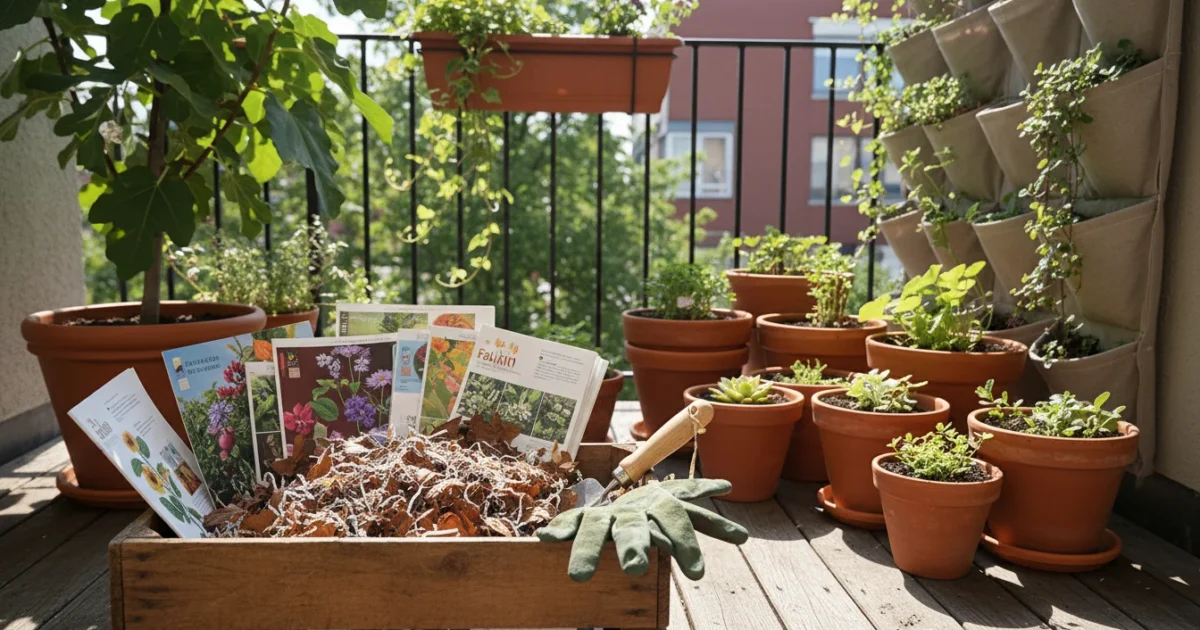
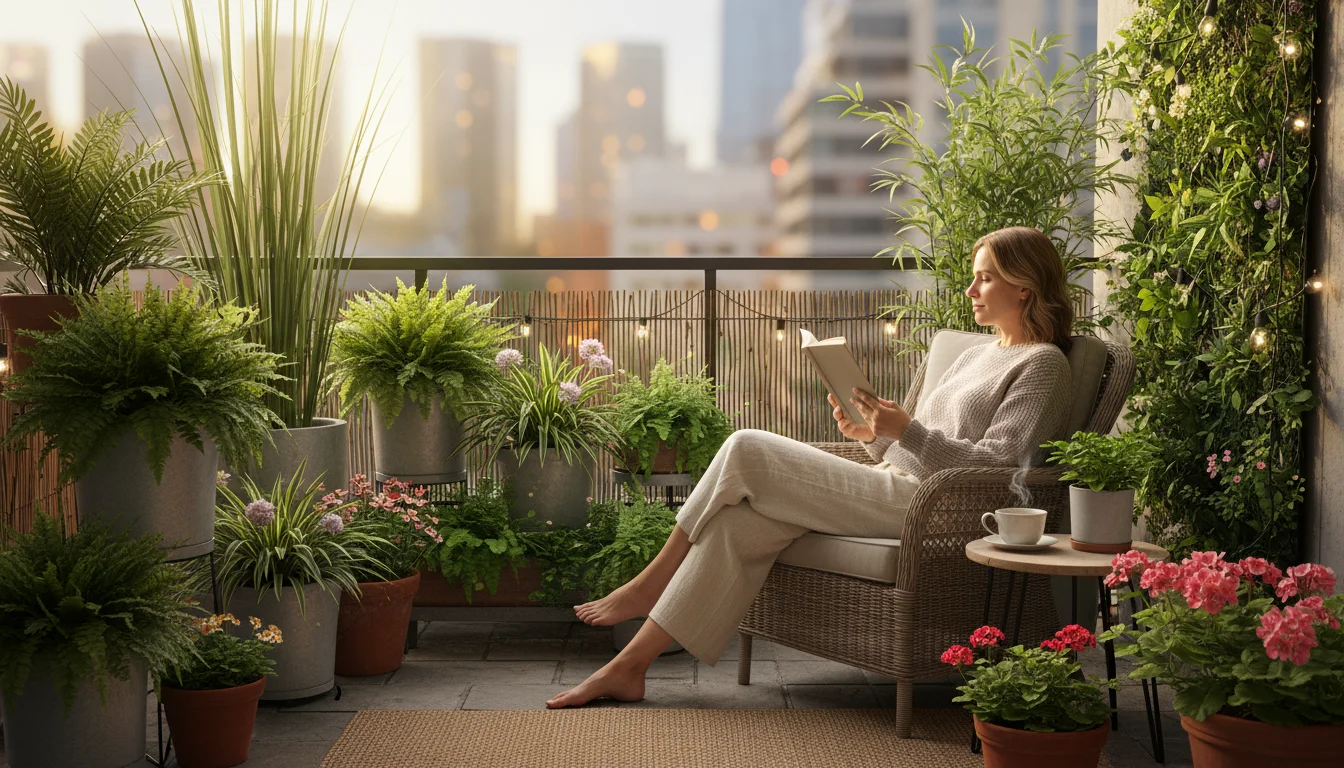
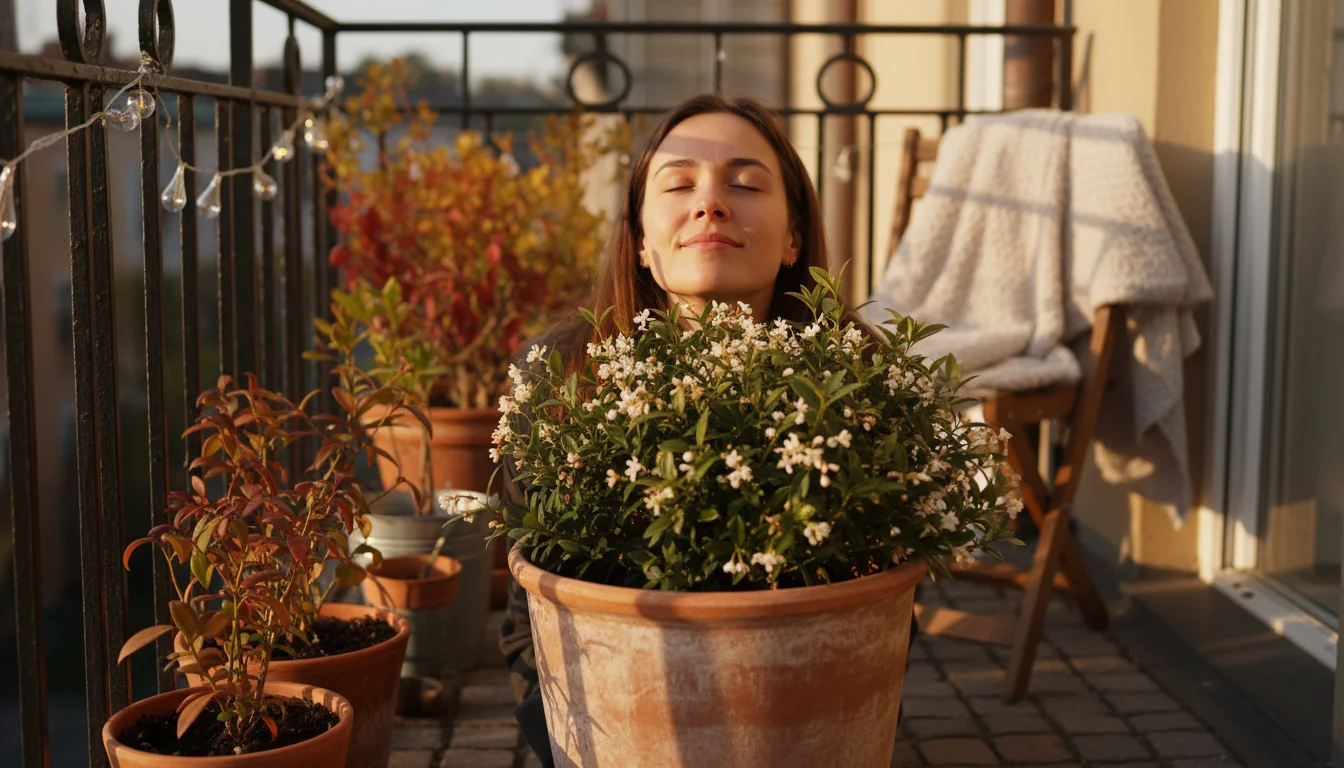
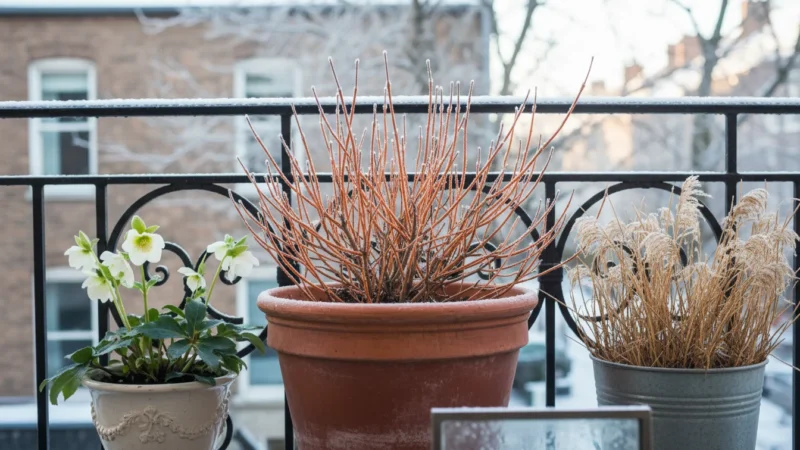

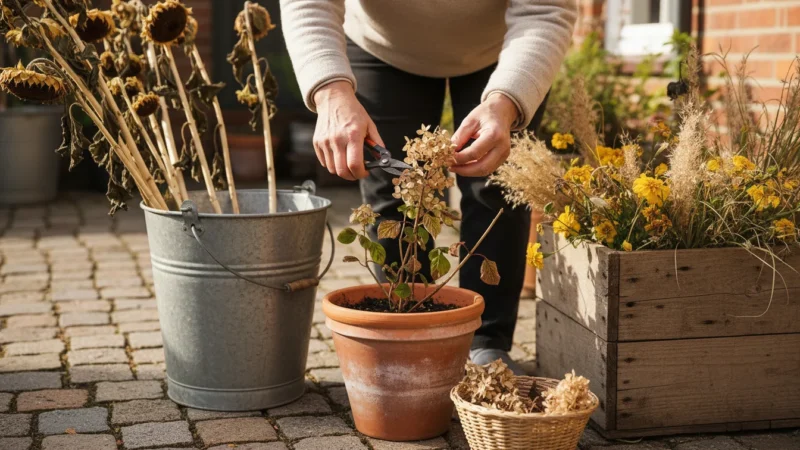
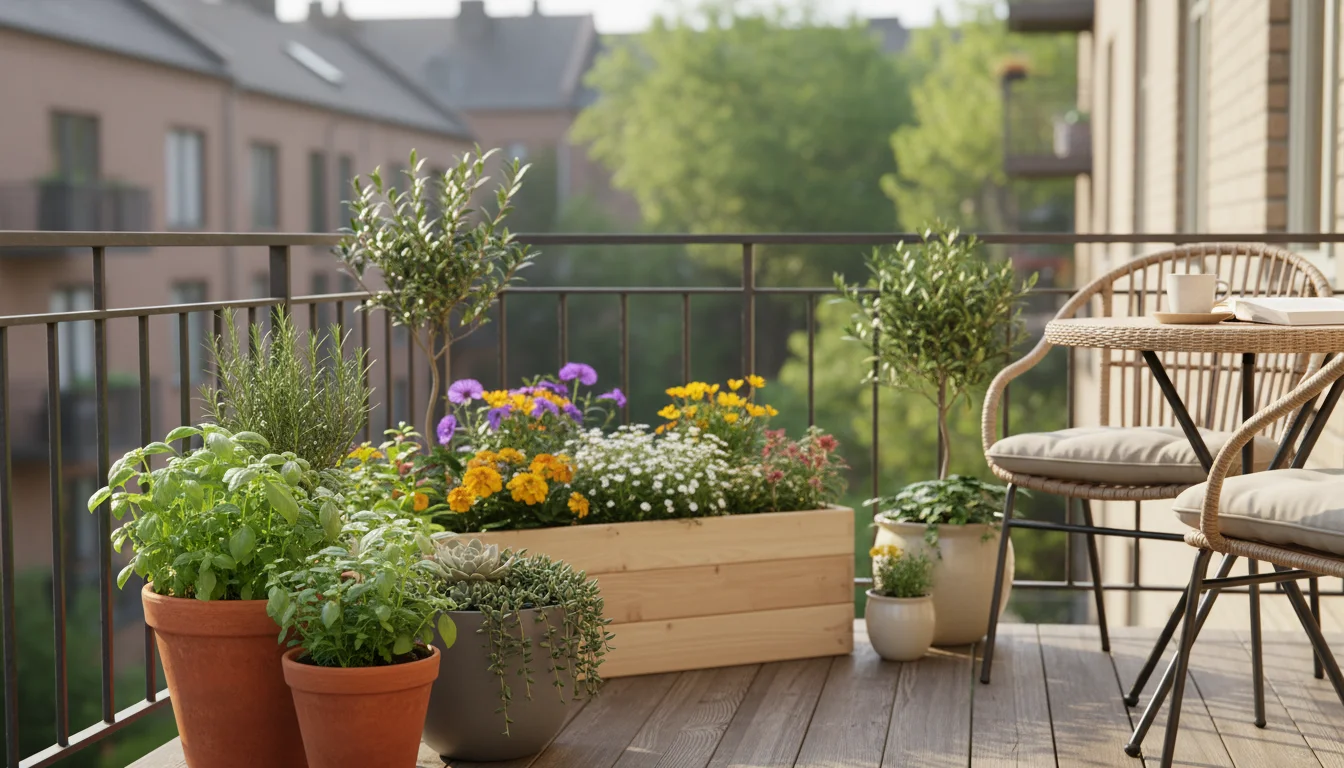
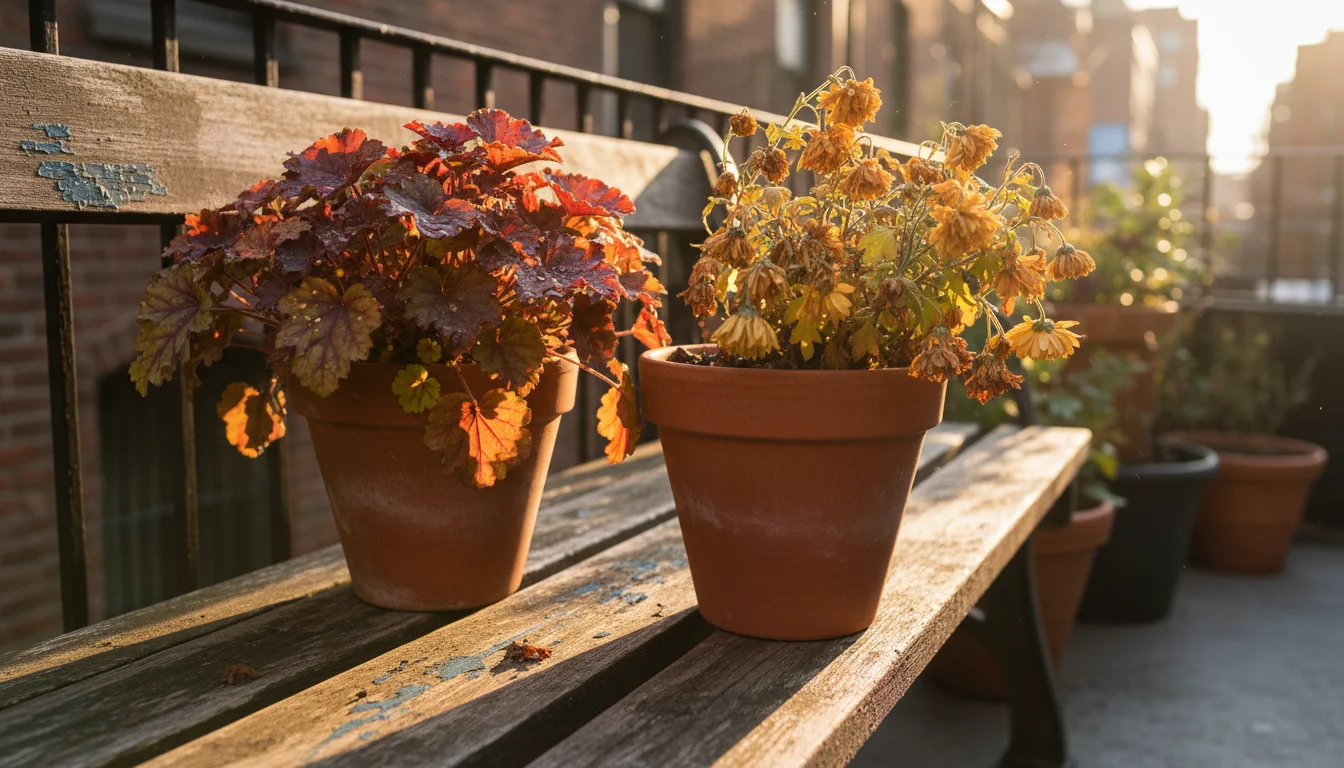


Leave a Reply